Dodonghang Port (도동항)
5.0 Km 11319 2021-06-08
Dodong 1-gil, Ulleung-gun, Gyeongsangbuk-do
+82-54-790-6454
Dodonghang Port is a ferry port of Ulleungdo Island, located 188 kilometers northeast of Pohang. The port has a 80-meter quay wall which was completed in 1977 with plans to develop the island into a tourist attraction. The port's yearly capacity is 20,000 tons of cargo, mostly consisting of imported goods for the island residents and export of squid caught around Ulleungdo Island. As ferry passengers on board approach the port, they will see Manghyangbong Peak to the left and Haengnam Lighthouse to the right.
Hwangje Restaurant (황제식당)
5.0 Km 0 2024-03-29
29 Dodong 1-gil, Ulleung-eup, Ulleung-gun, Gyeongsangbuk-do
Hwangje Restaurant is a Korean restaurant beloved by locals and tourists in Ulleungdo Island. This restaurant is the perfect place to grab a meal right after arriving or before leaving the island since it is close to the Ulleung Ferry Terminal, the main gateway for visitors. Side dishes are carefully prepared as a home-style Korean food, which is not too spicy and goes well with rice. The signature dish here is mussel and barnacle rice. With boiled mussels and barnacles (small-sized crustaceans that live on the beach, reefs, under boats, etc.), Ulleungdo Islands's local ingredients offer a unique taste to seafood lovers. The restaurant also serves various meat dishes, such as squid bulgogi and stir-fried pork.
Dodong Coastal Trail (도동 해안산책로)
5.2 Km 0 2024-03-29
Dodong-ri, Ulleung-eup, Ulleung-gun, Gyeongsangbuk-do
Dodong Coastal Trail leads to Jeodong Coastal Trail, and together, they form Haengnam Coastal Trail. Dodong Coastal Trail corresponds to section 1 of Ulleung Haedam-gil (2.8km) and is also known as the Coastal Trail 34 course. There is a walking trail with a rainbow bridge and LED streetlights with the geopark logo, making it an attractive geological site among tourists.
Various geologic structures formed by early volcanic activity on Ulleungdo Island can be observed on the Dodong Coastal Trail. There is a gradual decrease in the age of rock formations as you go from Dodong Port to Dodong Lighthouse. Basaltic lava flows, Clastic sedimentary rocks (rocks made up of pieces transported by landslides), ignimbrite (a volcanic rock formed by the consolidation of material deposited by pyroclastic flows), and trachyte (an extrusive igneous rock) can be found from bottom to top.
Dodong Lighthouse (도동등대(행남등대))
6.0 Km 10147 2021-06-23
291-71, Haengnam-gil, Ulleung-gun, Gyeongsangbuk-do
+82-54-791-2594
Dodonghang Lighthouse is located on the easternmost point of Ulleungdo Island, between Dodonghang and Jeodonghang Ports. The lighthouse is also called Haengnam Lighthouse after the nearby village. On clear days, visitors can see Dokdo Island to the east from atop the lighthouse. To the north, visitors can see the beautiful landscape of Jeodonghang Port, Chotdaebawi Rock, and Seonginbong Peak.
The lighthouse opened as an unmanned lighthouse in December of 1954. However, an increase in fishing boats operating in the area led to the upgrade into a manned lighthouse in June 1979.
Ulleungdo Squid Festival (울릉도 오징어축제)
6.0 Km 7552 2022-12-28
Jeodong-ri, Ulleung-gun, Gyeongsangbuk-do
• 1330 Travel Hotline: +82-2-1330 (Korean, English, Japanese, Chinese) • For more info: +82-54-790-6392, +82-54-790-6425~6
Held every August, Ulleungdo Squid Festival is a fun event promoting its outstanding local produce, squid. The festival on the beautiful island attracts hundreds of thousands of visitors.
Symbolizing the island, fish gathering lamps from fishing boats shed an elegant glow on the sea at night. The main events of the festival include catching squid in the sea against the scenic backdrop of the island, riding on a fishing boat, and eating delicious squid dishes. The festival also offers a fun array of events for visitors: Fishing Contest, Catching Mudfish, Walking on Traditional Roads, and Playing Pumpkin Taffy. In addition, visitors can purchase local produce at Local Produce Market, eat delicious food at Restaurant Market, and enjoy Ulleungdo Island/Dokdo Island Exhibition.
Haengnam Coastal Walking Path (행남 해안산책로)
6.0 Km 13961 2021-07-28
Dodong-ri, Ulleung-gun, Gyeongsangbuk-do
+82-54-790-6394
Haengnam Coastal Walking Path starts from Dodonghang Port and ends at Haengnam Village. The trail provides the perfect opportunity to see the coastal beauty of the island, with bridges passing open waters between natural cave formations and erroded valleys. About 400 meters from the village is Haengnam Lighthouse. The lighthouse area shows Jeodonghang Port through the pine trees, and the hillside is covered in beautiful yellow flowers in autumn.
Jeodonghang Port (저동항)
6.1 Km 9888 2021-10-28
Ulleungsunhwan-ro, Ulleung-gun, Gyeongsangbuk-do
+82-54-791-6629
Jeodonghang Port is the biggest port on Ulleungdo Island, where most of the island's squid fishing and related process takes place. Jeodongeohwa, referring to the luring lights from the boats for squid fishing, is one of the famous Eight Major Beauties of Ulleungdo Island. Chotdaebawi Rock, standing next to the port sea wall, has a sad legend about a daughter who died from grievance when her father never came back from fishing.
Nari Basin (나리분지)
6.7 Km 13184 2021-05-13
Nari-gil, Ulleung-gun, Gyeongsangbuk-do
+82-54-790-6423
Originally a caldera formed on the northern Seonginbong Peak, Nari Basin is the only flatland on Ulleungdo Island. The lava flow from the volcanic eruption created two other craters, which were turned into Nari Village in the northeast and Albong Village, now uninhabited, in the northwest. Records were found that the island was inhabited since the Usan-guk period, but the islanders had to move out of the island in the earlier Joseon period until a new settlement policy was enforced later on.
Hakpo Coast (학포해안 (울릉도, 독도 국가지질공원))
6.8 Km 0 2024-03-29
166-29 Hakpo-gil, Seo-myeon, Ulleung-gun, Gyeongsangbuk-do
Hakpo is known for its beautiful coast as well as the remains that record the frontier history of Ulleungdo Island. There are agglomerate, tuff, and trachyte layers along the Hakpo Coast. The relatively hard trachyte layer that cannot be eroded by waves and remains has formed a cape (a large piece of land sticking out into the sea), while the agglomerate and tuff layers, which are subject to weathering and erosion, have formed a bay. Additionally, sea cliffs are found along the coast. As the lower part of the vertical columnar joints erodes, the upper part of the cliff collapses due to gravity, creating a steep cliff as the process is repeated. Visitors can also enjoy the atmosphere of Hakpo at the nearby Hakpo Campground.
Taeha Coastal Trail and Daepunggam Cliff (태하 해안산책로 및 대풍감 (울릉도, 독도 국가지질공원))
8.1 Km 0 2024-03-29
Taeha-ri, Seo-myeon, Ulleung-gun, Gyeongsangbuk-do
Taeha Coastal Trail can be reached by crossing the pedastrian bridge next to Hwangtogul Cave. While crossing the bridge, visitors can enjoy murals of Taeha Village and a photo zone. Taeha Coastal Trail is made up of trachyte and agglomerate rocks, and boasts beautiful coastal scenery due to the unique topography eroded by the wind. It is also where one can observe tafoni, a honeycomb-shaped rocks that weathered by the reaction of salts contained in sea breezes.
By taking the Taeha Hyangmok Tour Monorail for about 6 minutes and walking along the trail for about 20 minutes, visitors will reach Ulleungdo Lighthouse (Taeha Lighthouse) and the Hyangmok Geo Skywalk.
Junipers in Daepunggam Cliff grew in weathered soil formed in the cracks of columnar joints, creating a unique ecological environment isolated from inland areas for a very long time. Due to its significance, Junipers were designated as natural monuments.
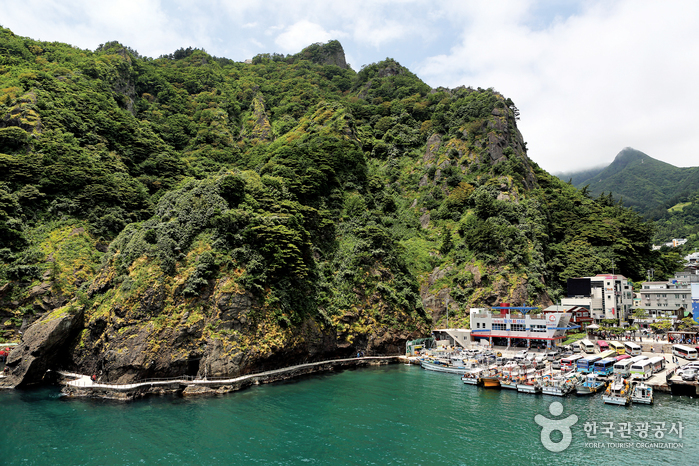

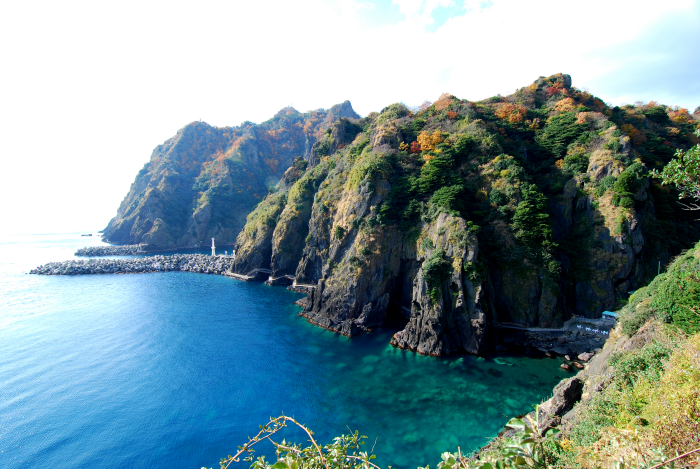
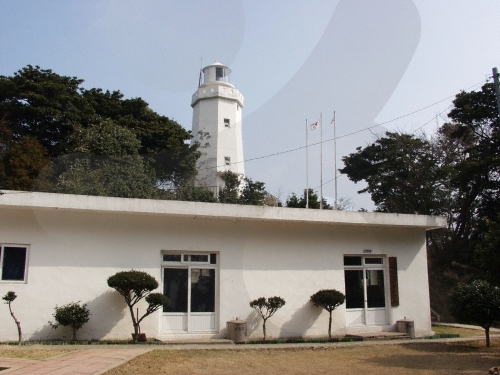

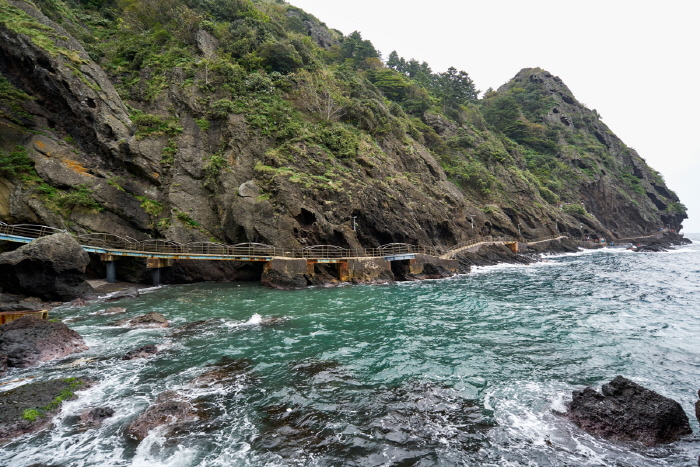
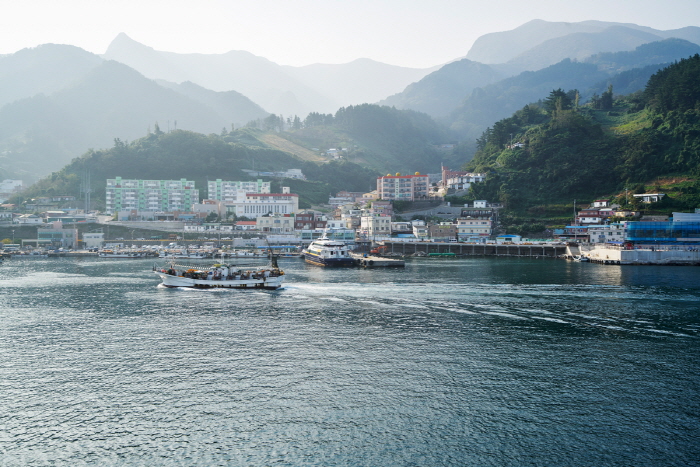
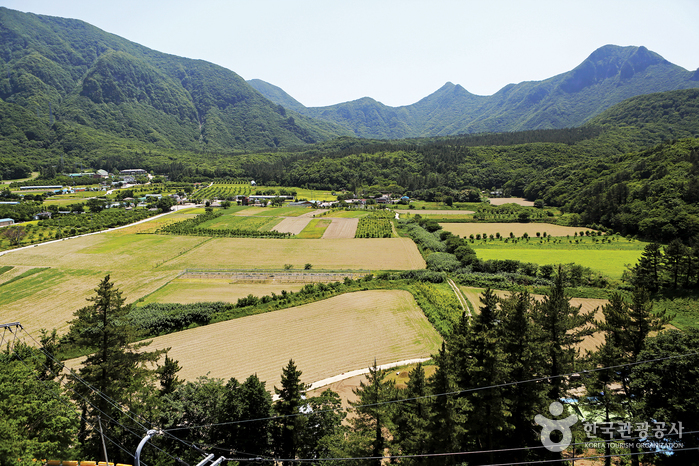
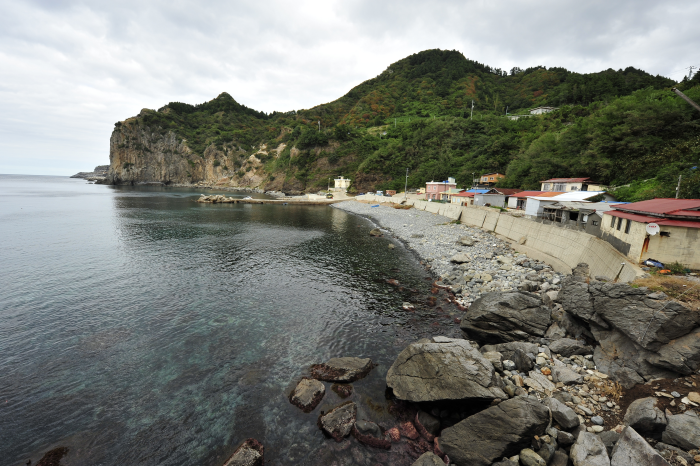
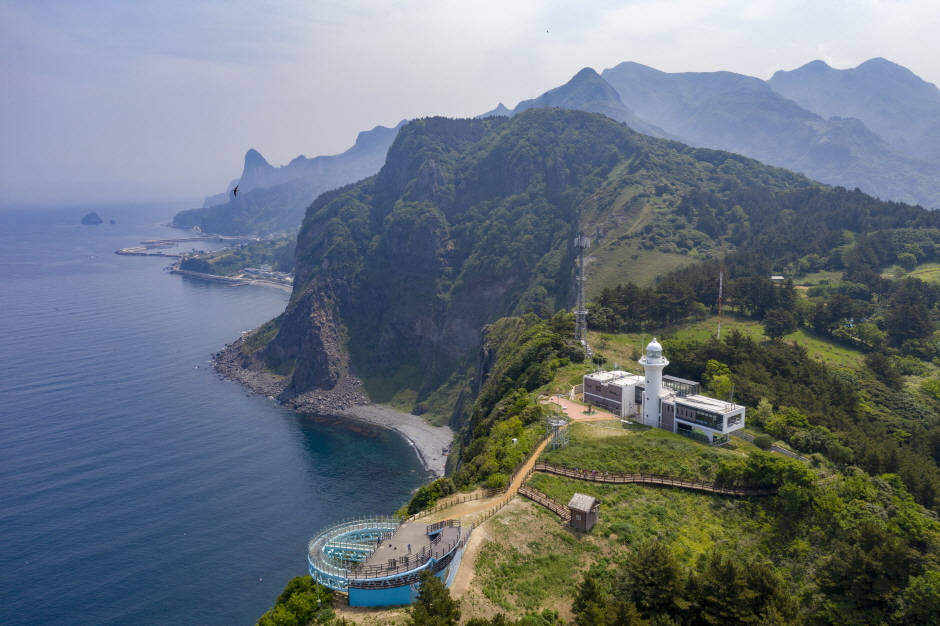
 English
English
 한국어
한국어 日本語
日本語 中文(简体)
中文(简体) Deutsch
Deutsch Français
Français Español
Español Русский
Русский